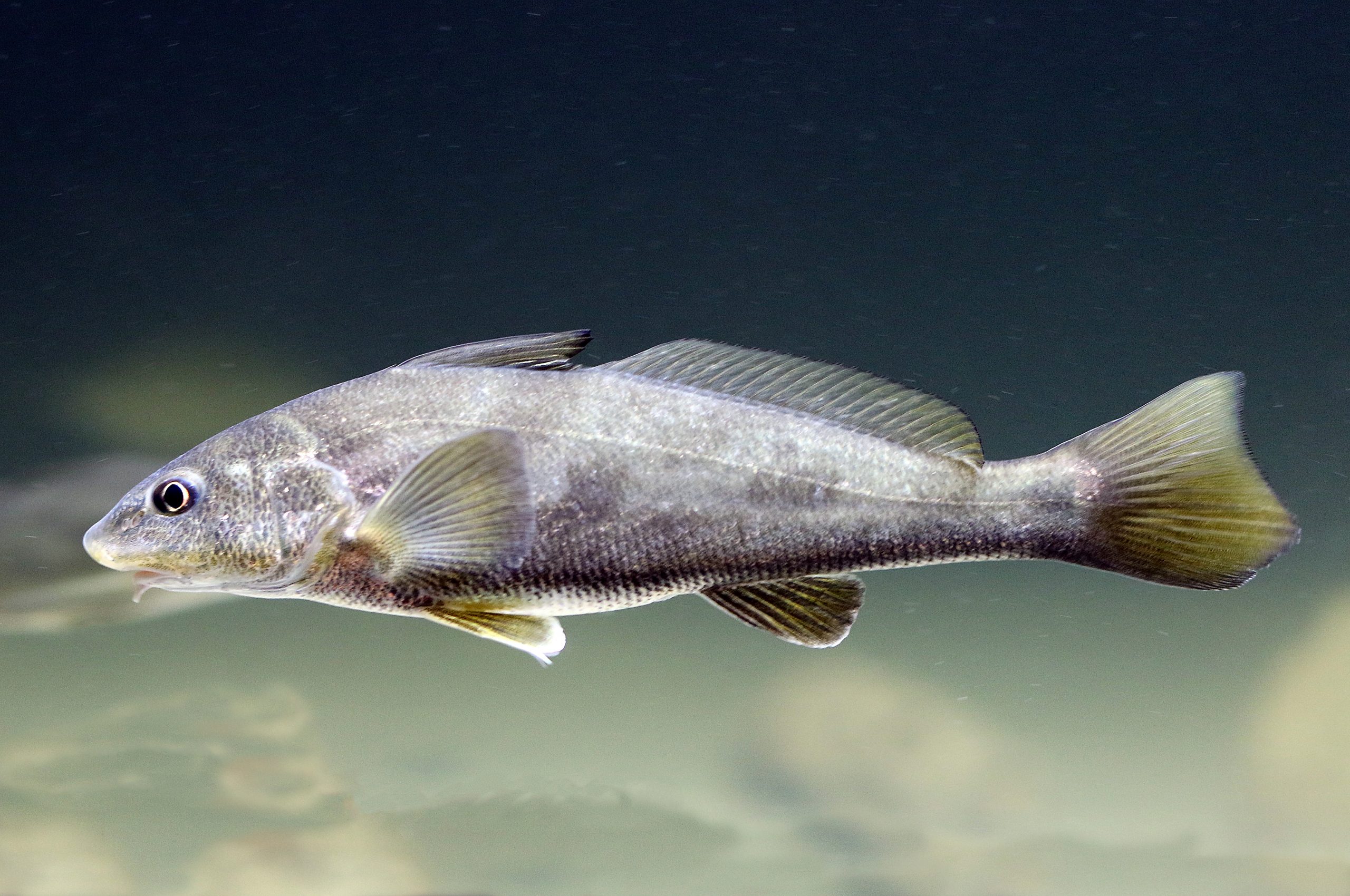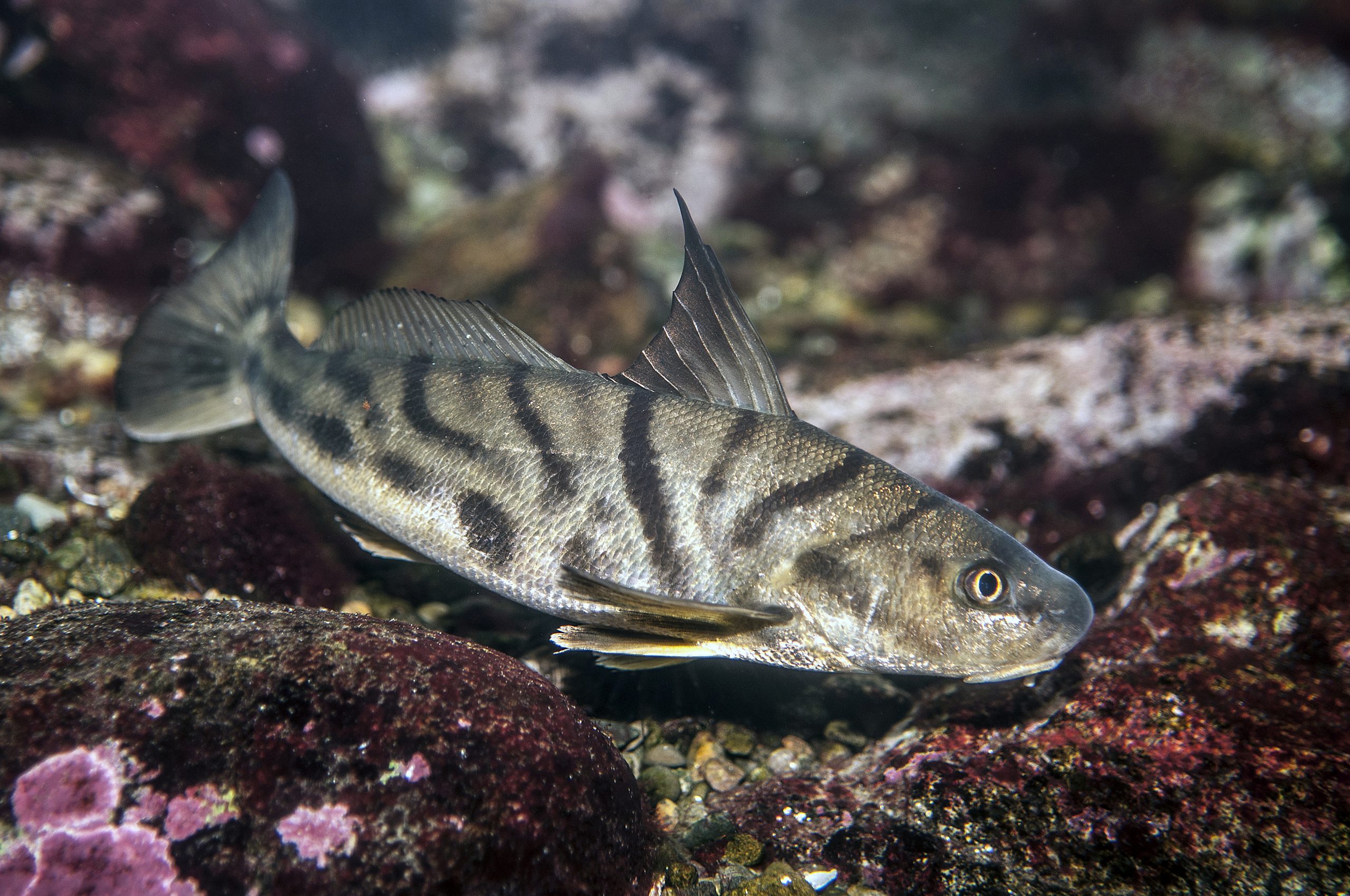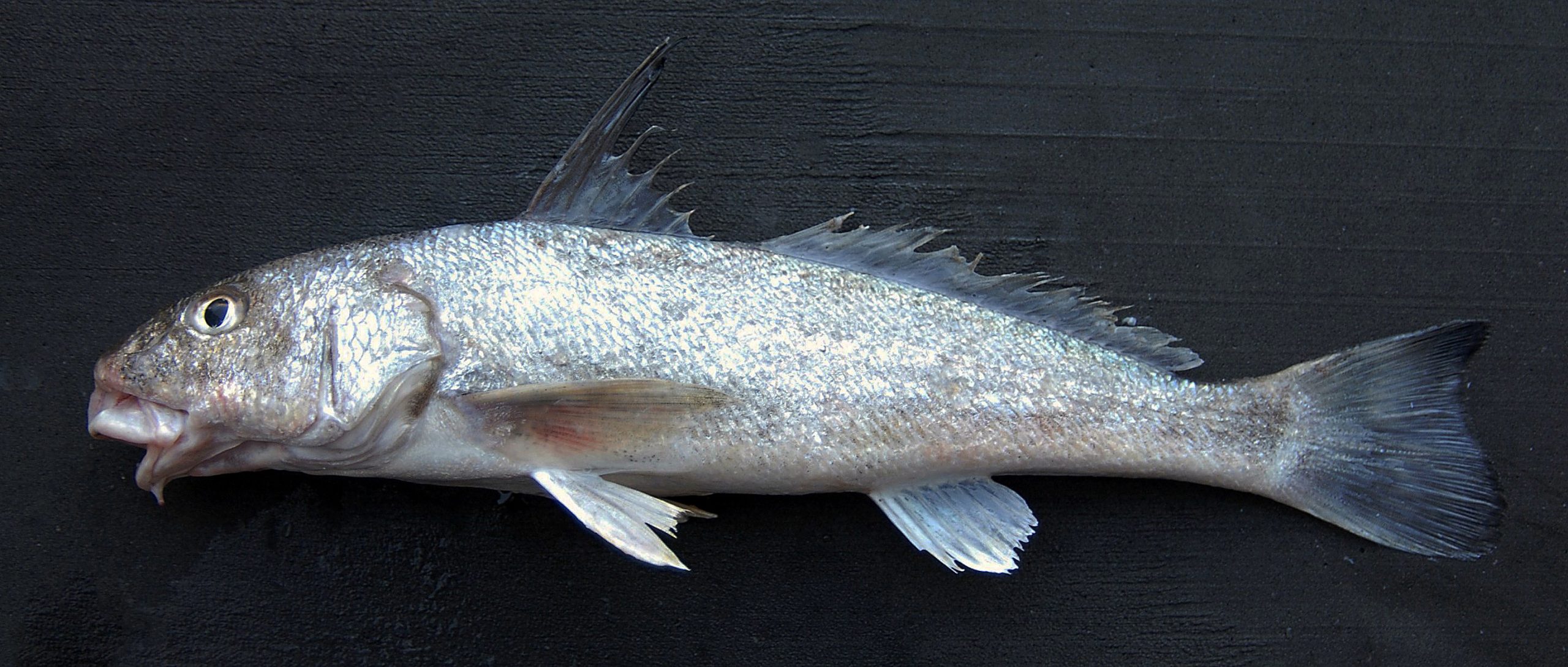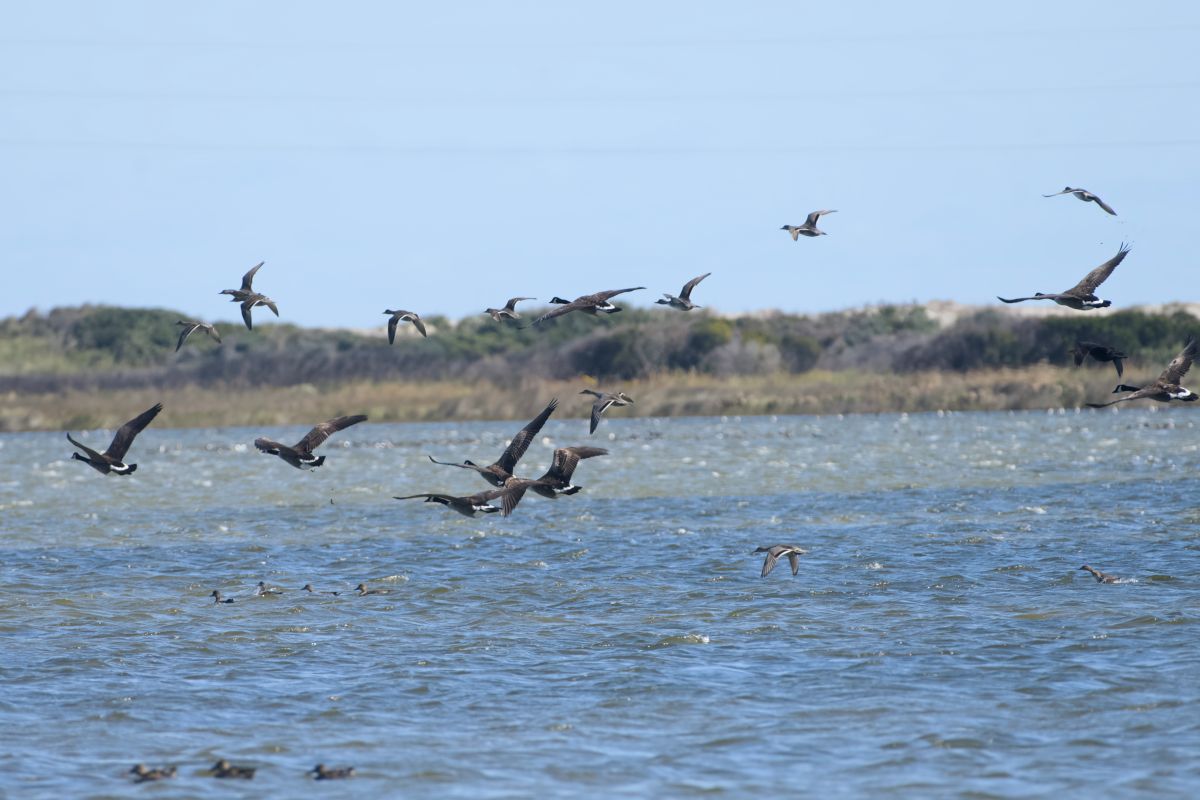
Kingfishes, a group of fish found in North Carolina waters, are members of the drum family and are cousins to other familiar species including spotted sea trot, spot, Atlantic croaker, as well as red and black drum.
If you were to hold a red drum and southern kingfish side by side and cover their bodies, only comparing the shape and size of their face and head, they could pass as fraternal twins.
Supporter Spotlight
There are three species of kingfish in North Carolina waters. These include, in order of importance to the region, southern, gulf and northern kingfish. They all share the common name of “sea mullet” in these parts, but depending on the region, they’re also called king whiting, king croaker, sea mink, roundhead, hard head, whiting, hake, Carolina whiting and Virginia mullet.
“These three species are medium-sized fish with slender bodies and backs that appear slightly elevated,” said Kevin Brown, North Caroline Division of Marine Fisheries kingfish biologist. “The southern kingfish are the most abundant of the three in North Carolina. They have a small mouth and a single fatty barb on the chin, as well as a cone-shaped mouth area. Their body coloration varies widely with the habitat they live in. Typically, they have a silvery gray color on top, and occasionally black and white below with dusky markings on the side that may have seven to eight vertical bars that are darker than the rest of the fish. Juveniles are generally darker than adults.
On average, kingfish will grow to about 18 inches in length. However, the average catch in North Carolina is about 11 inches in total length, he said.
According to the Virginia Institute of Marine Science, the maximum length of southern kingfish is 23.62 inches, with an average length of 13.78 inches. Gulf kingfish are the same size as the southern variety. The northern kingfish is usually smaller with a maximum length of 15.75 inches and an average of 11.81 inches.
Kingfish become sexually mature at about one year and will spawn in offshore waters between April to October. Prevailing currents and winds carry the newly hatched larvae through the inlets into the upper reaches of local estuary nursery raising habitat where they will continue to feed and grow, seeking out progressively larger food sources and appropriate habitat.
Supporter Spotlight

“Northern kingfish are found from the Gulf of Maine to Florida, and northern Gulf of Mexico from Florida to Bay of Campeche. Southern kingfish can be found from Cape Cod to northern Argentina. Finally, Gulf kingfish can be observed from Chesapeake Bay to Florida, and in the Gulf of Mexico and continental coast of the Caribbean Sea,” Brown said.
In North Carolina waters, southern kingfish are by far the most abundant species of this fish. Northern kingfish are the more abundant kingfish species between Massachusetts to Virginia and can be found as far south as North Carolina, but their numbers are comparatively low verses the southern and gulf varieties. Gulf kingfish are the most abundant kingfish species in the surf zone south of Cape Hatteras and all points south, he said.
Southern kingfish prefer sandy mud to hard sand bottom habitat in shallow coastal waters, as well as in the surf zone and estuaries. Juveniles are frequently seen in brackish waters. This species feeds upon bottom-dwelling organisms, primarily worms and crustaceans.
“When they grind their teeth together, they may produce a clicking sound. Southern kingfish are mostly caught by using gill nets, bottom trawls, seine, and pound nets. They may also be landed by recreational fishermen. Kingfish make for some tasty meals when prepared properly,” said Brown.
Gulf kingfish differ from their southern and northern cousins, preferring coastal waters over sandy and sandy mud bottoms. They can especially be found in the surf zone, especially during the juvenile stage of their development, that frequent estuaries, but are rarely found in waters with a salinity lower than 21%, he said. Like other kingfish, the gulf species also feeds on bottom-dwelling animals, primarily crustaceans and worms. This fish also produces a clicking noise by grinding their jaw and teeth together.

“Gulf kingfish are primarily caught with gill nets, bottom trawls, pound nets and seines, as well as by recreational fishermen. When landed, they are usually sold as fresh fish at supermarkets and seafood outlets,” Brown said.
Northern kingfish also live in shallow coastal waters over sand to sandy mud bottoms. You can usually find them in the surf zone and in estuaries. Juveniles will usually enter tidal rivers and creeks of less than 1% salinity. They feed on bottom-dwelling organisms, primarily crustaceans and worms. They are mainly caught with gill nets, bottom trawls, pound nets, and seines, as well as by recreational fishermen. In North Carolina there is no special fishery to take notice of with the northern variety, but they may be caught along with other members of the kingfish family.
All three species of kingfish live near and feed on the bottom. Generally speaking, kingfishes move from estuarine and nearshore ocean waters to deeper offshore waters as water temperature cools. Spawning takes place in the ocean from April to October.
Management of Kingfishes
For shrimp or crab trawls, there is a 300-pound trip limit for kingfishes south of Bogue Inlet from Dec. 1 through March 31. No other harvest limits are in place specific to kingfishes in any other fisheries.
“Commercial landings for kingfishes include southern, northern, and Gulf kingfishes combined. Landings have fluctuated historically but have been on an increasing trend since 2011,” Brown said.
In 2019, landings of 702,234 pounds increased 58% compared to 2018. Most kingfishes landed are from the ocean gill net fishery. The average landings from 2010 to 2019 were 719,992 pounds. Harvest of kingfishes is seasonal with peak landings in April and November. Peaks in landings coincide with seasonal movements of kingfishes along the Atlantic coast, said Brown.
Recreational landings of kingfishes are estimated from the Marine Recreational Information Program, or MRIP. Recreational estimates across all years have been updated and are now based on the MRIP new Fishing Effort Survey-based calibrated estimates. For more information on MRIP, visit https://www.fisheries.noaa.gov/topic/recreational-fishing-data.
Recreational landings for the three species of kingfish had been on an increasing trend from 1983 until 2014. In 2015, 2016 and 2017, recreational landings declined, with 2017 having the lowest landings of 267,234 pounds since 1999. In 2019 recreational landings of 881,104 pounds reflected an increase of 54% from 2018, Brown said.
“Most kingfishes are landed from the ocean and the majority of the fish are caught from man-made structures, such as piers, jetties, or bridges or from beaches. A smaller portion of kingfishes are caught in the estuary waters of the state and the majority of those fish are harvested by anglers fishing from private vessels. Recreational harvest of kingfishes is also seasonal with most fish harvested during the spring and the fall, and lowest during the summer. Most of the recreational catch consists of kingfish from 8 to 12 inches,” he said.
Fishermen can pursue kingfish from boats, jetties and piers in the nearshore waters, usually with two-hook bottom rigs baited with bloodworms, shrimp, mole crabs or squid. Fishers can also use spec rigs or jigs to catch kingfish.
This species is frequently caught as a bycatch while fishers are pursuing weakfish.







